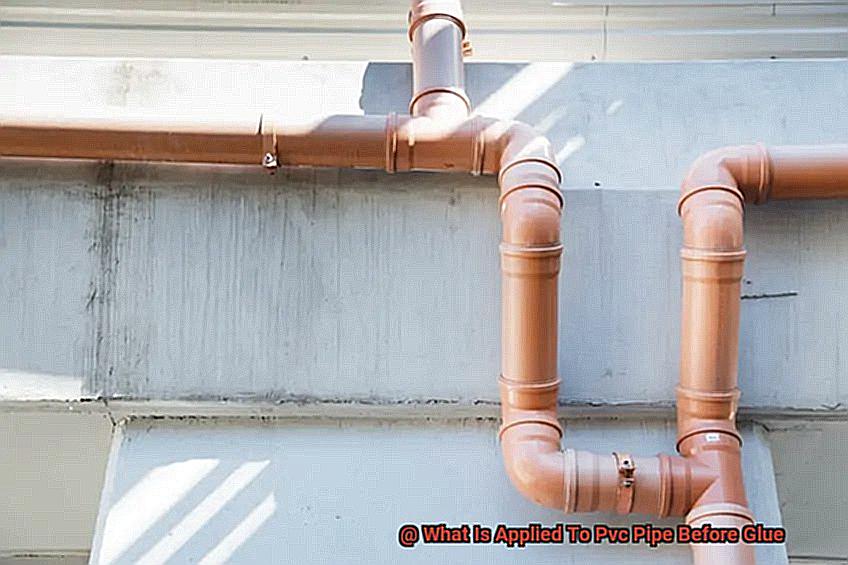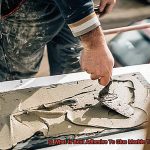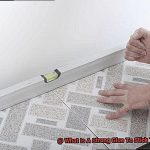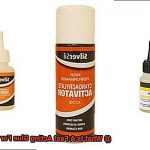Well, today’s your lucky day because we’re about to unveil the exclusive pre-glue ritual that guarantees a rock-solid seal and leak-free pipes.
Imagine this – you’ve got a busted PVC pipe that needs fixing or maybe you’re embarking on a fresh plumbing project. You reach for your trusty can of PVC glue, ready to work your magic. But hold up. Before the glue even comes into play, there’s a crucial step that often goes unnoticed but plays a vital role in achieving an unbreakable bond.
So, what exactly gets slathered onto PVC pipe before glue? Drumroll, please – it’s primer. That’s right, before the glue takes center stage, PVC primer swoops in to save the day. But what does this magical primer do, you ask?
First things first, primer cleanses the surface of the PVC pipe by banishing any dirt, grease, or contaminants that could ruin the bond. It creates a pristine canvas, ensuring optimal adhesion for the glue. But wait – there’s more. Primer also works its magic by softening the pipe’s surface, making it more porous and amplifying the glue’s effectiveness.
But here’s where things get really interesting – primer preps the pipe by gently etching its surface. This allows the glue to penetrate deep into the material and forge an unyielding weld. Say goodbye to pesky leaks or weak spots that could lead to costly plumbing disasters down the line.
So next time you find yourself in a DIY plumbing pickle or embarking on a new project, don’t forget about our unsung hero lurking in the shadows – PVC primer. It’s the secret sauce that sets the stage for glue to work its enchantment, guaranteeing an unbeatable bond and flawless plumbing craftsmanship. Stay tuned for our upcoming blog posts where we delve even deeper into the captivating world of plumbing wizardry.
What is PVC Pipe?
Contents
- 1 What is PVC Pipe?
- 2 Cleaning the PVC Pipe Before Glue Application
- 3 Priming the PVC Pipe for Glue Application
- 4 Types of Primers Used for PVC Pipe
- 5 Applying Primer to the PVC Pipe
- 6 Aligning the PVC Pipe and Fittings Before Glue Application
- 7 Benefits of Properly Preparing PVC Pipes Before Glue Application
- 8 Conclusion
When it comes to plumbing and construction projects, PVC pipe, also known as polyvinyl chloride pipe, stands out as the go-to material. Its lightweight, durable, and corrosion-resistant properties make it an ideal choice for a wide range of applications.
In this comprehensive guide, we will delve into the characteristics of PVC pipe, its manufacturing process, and its multitude of uses in various industries.
Characteristics of PVC Pipe:
- Lightweight Wonder: PVC pipes weigh significantly less than their metal counterparts, making them a breeze to handle and install.
- Durability Unleashed: With a lifespan of up to 100 years, PVC pipe boasts exceptional durability. It can withstand high pressure and temperature variations without compromising its structural integrity.
- Corrosion Resistance Extraordinaire: PVC pipes are impervious to the corrosive effects of chemicals and other substances, ensuring their reliability in diverse environments.
- The Smooth Operator: The smooth interior surface of PVC pipes guarantees efficient fluid flow while minimizing the accumulation of deposits or blockages.
Manufacturing Process:
The journey from raw materials to finished PVC pipe involves a fascinating process called extrusion. Let’s take a closer look:
- Polymerization Magic: Vinyl chloride monomer molecules undergo the magical process of polymerization, transforming into PVC resin.
- Extrusion Excellence: The PVC resin is melted and skillfully forced through a die to shape it into the desired form and size.
- Cool and Cut: Once extruded, the newly formed PVC pipe is efficiently cooled down and precisely cut into specific lengths.
Uses of PVC Pipe:
- Plumbing Marvels: Whether in residential or commercial settings, PVC pipes dominate plumbing systems for hot and cold water distribution. Their corrosion resistance and smooth interior surface ensure an efficient flow of water.
- Irrigation Wonders: Agricultural irrigation systems rely on PVC pipes due to their durability, ease of installation, and resistance to chemicals.
- Drainage Champions: PVC pipes excel in drainage systems, effortlessly accommodating high water flow rates without compromising their structural integrity.
- Electrical Guardians: PVC pipes serve as reliable electrical conduits, protecting and routing electrical wiring in buildings.
- Venting Heroes: Venting systems rely on PVC pipes to eliminate gases and odors from plumbing fixtures, ensuring proper ventilation.

Cleaning the PVC Pipe Before Glue Application
In the realm of plumbing, PVC pipe stands as an unsung hero, dutifully transporting fluids and safeguarding electrical wiring in buildings. But did you know that the key to a robust and enduring connection between your PVC pipe and fittings lies in proper cleaning? In this captivating guide, we will embark on a journey to unveil the secrets of cleaning PVC pipes before glue application. So grab your cleaning arsenal, and let’s unleash the power of pristine pipes.
Step 1: Banishing Dirt and Debris:
Our first quest is to vanquish any visible dirt or debris that may tarnish our PVC pipe’s surface. Arm yourself with a clean cloth or a nimble brush, and commence the battle against grime. Pay meticulous attention to those cunning ends where dirt often lurks. Only by achieving a state of absolute cleanliness can our PVC pipe emerge as a sparkling champion.
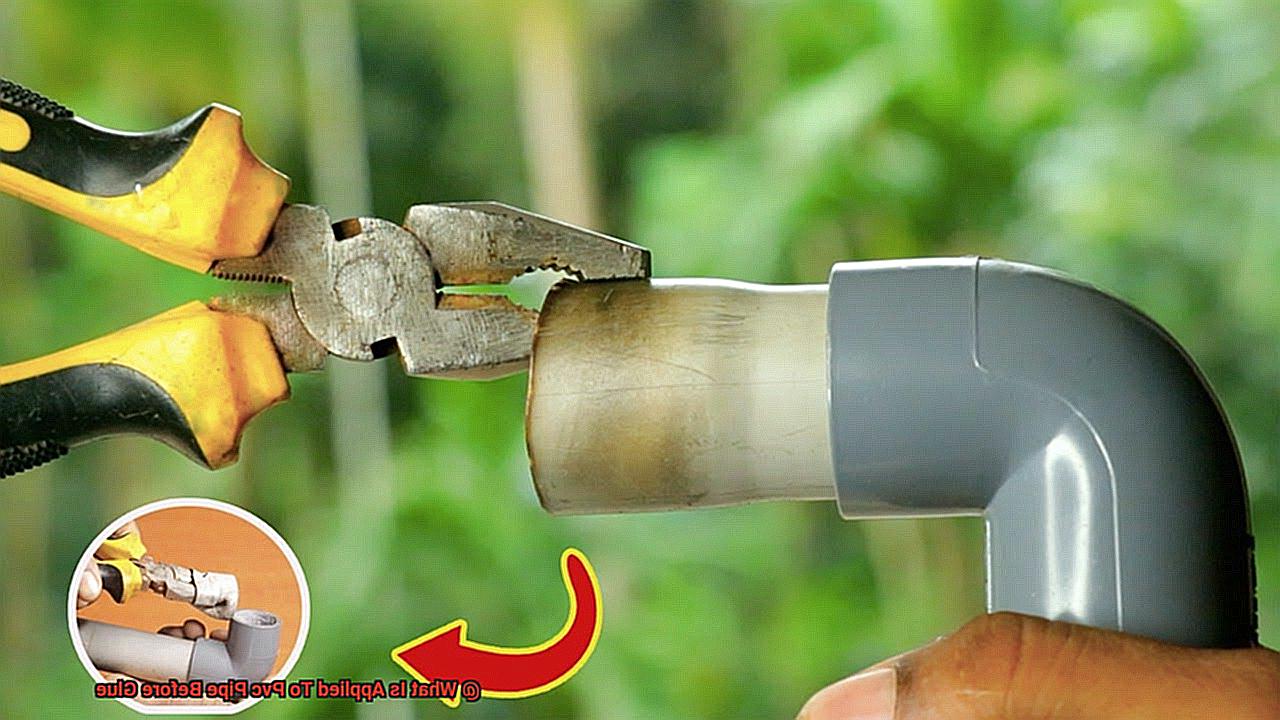
Step 2: Bidding Farewell to Grease:
Now that we have triumphed over dirt, it is time to confront the treacherous nemesis known as grease. This slippery foe can sabotage our bonding mission. Fear not. Prepare a potion of mild detergent or trusty dish soap mixed with water, and initiate a thorough cleansing ritual. Rinse diligently to ensure no traces of grease remain. Our goal is to establish a realm cleansed of all greasy adversaries.
Step 3: Drying like a Pro:
In this epic battle for superior bonding, moisture emerges as a formidable adversary. To secure victory, we must dry our PVC pipe completely before the glue application commences. Seize a pristine, dry cloth or towel and delicately pat down the surface, ensuring not even a drop of moisture lingers. Remember, a moisture-free domain begets unyielding joints.
Step 4: Handling with Tender Care:
As we navigate the treacherous path of cleaning, it is vital to discern which cleaning agents to avoid. The wicked trio of acetone, lacquer thinner, and paint solvents can inflict irreversible damage upon our PVC pipe, transforming our valiant hero into a fragile sidekick. Instead, confide in mild cleaning agents exclusively crafted for PVC pipes, and shield your precious pipe from harmful chemicals.
Priming the PVC Pipe for Glue Application
Today, we embark on a thrilling journey into the art of priming PVC pipes for glue application. Brace yourself for a wild ride as we uncover the secrets to achieving an unbreakable bond. Prepare your cleaning arsenal and get ready to conquer dirt, banish grease, and handle your pipes with utmost care. Together, we’ll ensure that your PVC projects stand tall against the test of time.
Step 1: The Purity Protocol – Cleanliness is Next to Glue-liness
Before we even think about priming, let’s ensure our PVC pipe is pure and pristine. No room for unwanted debris or moisture here. Grab a clean cloth and wipe down that pipe like a pro. For those stubborn stains, a mild detergent solution will work wonders. Once your pipe has been thoroughly cleansed, grant it the luxury of complete drying time.
Step 2: The Primer – Your Gateway to Bonding Bliss
Now that our PVC pipe is sparkling clean and dry, it’s time to introduce it to its new best friend – the primer. This magical elixir contains solvents and chemicals specifically designed to soften the surface of the pipe and eliminate any remaining contaminants. Imagine it as a superhero cleaning agent that transforms your pipe into a glue-tastic paradise.
Step 3: Applying the Primer – Brush Like a Pro
To wield the power of the primer, equip yourself with a brush or applicator specially crafted for this mission. Dip your brush into the primer solution and unleash its enchantment across every inch of the PVC pipe’s surface. Leave no stone unturned – we demand optimal adhesion. But remember, my friend, less is more when it comes to primer. Oversaturation could spell weakness in our joints or even bond failure.
Step 4: Patience, the Virtuous Virtue – Let It Dry
After priming your PVC pipe, it’s time to exercise the art of patience. The solvents in the primer need time to perform their magic and gracefully evaporate, bestowing upon you a beautifully treated surface. Respect the manufacturer’s instructions for the recommended drying time, as variables like temperature and humidity can influence its duration. Trust me, my fellow PVC aficionado, this waiting game will reap rewards beyond your wildest imagination.
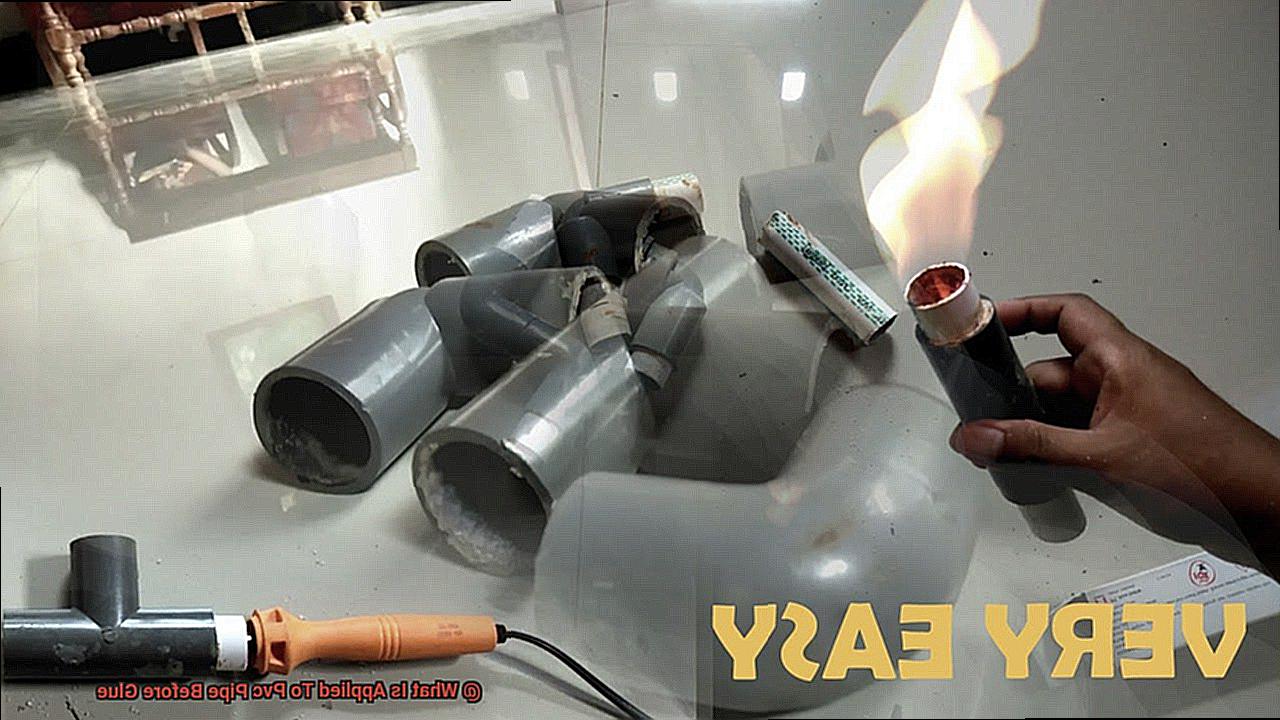
Types of Primers Used for PVC Pipe
The secret to achieving strong and reliable PVC pipe connections lies in the proper preparation of the pipe surface. Primers, those unsung heroes of plumbing, play a crucial role in ensuring that the adhesive used for bonding sticks securely. In this article, we will delve into the world of primers and explore their diverse applications in creating robust PVC pipe connections.
Cleaner Primers:
Imagine encountering a PVC pipe covered in dirt and grease while preparing it for bonding. Enter cleaner primers, the solution to this sticky situation. These primers contain solvents that dissolve any impurities on the pipe’s surface, leaving it immaculately clean and primed for a formidable bond. With cleaner primers, your PVC pipes will be free from contaminants that could compromise the strength of the connection.
Softening Primers:
Sometimes, connecting PVC pipes with irregular surfaces or different diameters can be a daunting task. Fear not, for softening primers are here to save the day. With their unique combination of solvents and softening agents, these primers penetrate the outer layer of the pipe, creating a rougher surface that enhances bond strength. No matter how challenging your PVC pipe connection may be, softening primers ensure a smooth and secure joint.
Activator Primers:
Picture this: you’re working on a plumbing project amidst extreme weather conditions like high humidity or low temperatures. Achieving a strong bond can seem like an uphill battle. But fear not, because activator primers are your trusty sidekick in such situations. These primers contain chemicals that react with both the adhesive and the surface of the PVC pipe, forging an unbreakable bond even in challenging conditions. Activator primers are like supercharged boosters for your PVC pipe connections.
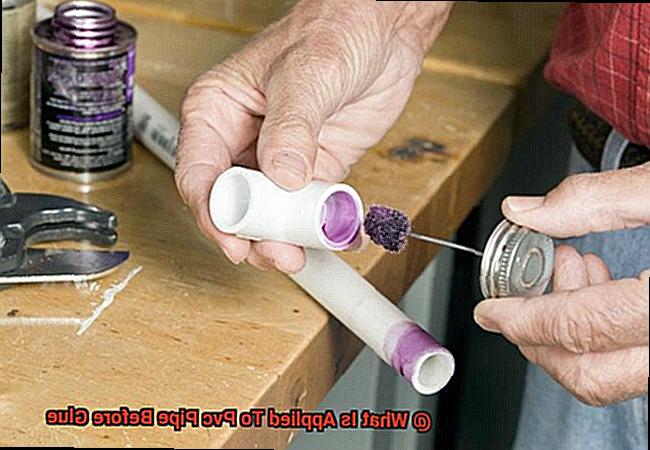
Low VOC Primers:
If you’re an eco-conscious individual, then low VOC primers are your go-to choice. These primers boast reduced levels of harmful chemicals, making them more environmentally friendly compared to traditional options. By opting for low VOC primers, you’ll not only protect the planet but also ensure a strong and durable PVC pipe connection. These primers align sustainability with performance, offering a win-win solution for both you and the environment.
Specialty Primers:
Just like superheroes, specialty primers possess unique powers tailored for specific applications. Whether it’s underground installations or pipes exposed to harsh chemicals or extreme temperatures, these primers have got you covered. With their specialized formulations, they provide extra protection and enhance the overall durability of your PVC pipe connections. When faced with challenging situations, turn to specialty primers to save the day.
Applying Primer to the PVC Pipe
Today, we embark on a journey into the unsung realm of primers. These mighty allies play a pivotal role in forging unyielding connections between PVC pipes. Think of them as the trusty sidekick to your favorite superhero, always ready to save the day in the face of challenging plumbing endeavors. So, don your capes and prepare to witness the remarkable process of applying primer to PVC pipes before the glue takes hold.
Step 1: Purifying Cleanliness
Before venturing into the world of primers, we must first bestow upon our PVC pipe a pristine cleanliness. For dirt, grease, or debris on the surface can thwart the primer’s power, and we certainly wouldn’t want that, would we? Armed with soapy water, wage war against impurities and grant that pipe a thorough scrubbing. Once it gleams with squeaky-clean perfection, rinse away the remnants and gently pat it dry. Now, we stand poised for the grand spectacle.
Step 2: Primer Elixir Unleashed.
Behold the secret weapon in our arsenal – the primer. Envision a small vessel brimming with a clear or purple elixir. Within its magical depths lie solvents that dissolve the outer layer of the PVC pipe, fashioning an ideal rough surface for the adhesive to embrace. It’s akin to endowing your pipes with a rejuvenating superhero makeover.

Step 3: The Art of Application
Before delving into the application of primer, ensure you find solace within a well-ventilated chamber and don your trusty protective gloves. Safety is paramount, fellow superheroes. Now, shake that vessel with gusto, ensuring all its powers mingle harmoniously. Armed with either a brush or an applicator (some primers even boast a built-in cap applicator for convenience), grace the entire designated area with a delicate and even coat of primer. Remember, moderation is key – an excess of primer can compromise the structural integrity of your PVC pipe.
Aligning the PVC Pipe and Fittings Before Glue Application
Properly aligning PVC pipe and fittings before applying glue is the secret to creating rock-solid connections that will stand the test of time. Don’t underestimate the importance of this often overlooked step – it can mean the difference between a leak-free joint and a plumbing disaster. So, let’s dive into the nitty-gritty details of how to achieve perfect alignment.
First things first, measure and cut your PVC pipe with precision. A sharp, fine-toothed saw is your superhero tool here. Make clean, precise cuts and leave no room for rough edges or burrs to spoil your masterpiece. Smooth them out using sandpaper or a trusty deburring tool.
Now comes the magical moment of alignment. Dry-fitting your pipe and fittings together without any glue is like a trial run – it allows you to make adjustments before committing to a permanent bond. Ensure that everything fits snugly and securely in place.
To align your pipe and fittings, start by gently inserting the pipe into one end of the fitting. Twist and push it until it reaches the bottom, ensuring a snug fit without causing damage. Then, align the other end of the fitting with its corresponding pipe or fitting. Twist and push until it locks securely in place. Take a moment to visually inspect the joint and run your fingers along it – any gaps or inconsistencies are red flags that demand attention.
Alignment is not just about appearances; it’s about creating strong connections that can withstand pressure without leaking. A misaligned joint can lead to weak connections, leaks, and even catastrophic failure over time. So, take the time to make those necessary adjustments until everything is perfectly aligned. Trust me, your future self will thank you for it.
Once you’ve achieved alignment perfection, mark the position of each fitting on the pipe using a permanent marker. This simple trick will serve as a guide when it’s time to apply the glue.
Remember, PVC glue has a limited working time, so don’t rush the alignment process. Take the time to ensure everything is aligned and ready before applying the adhesive. Rushing can lead to mistakes and compromised joints – a recipe for disaster.
Benefits of Properly Preparing PVC Pipes Before Glue Application
Imagine a plumbing system that boasts unbreakable connections and leak-free joints. The secret ingredient lies in the preparation of PVC pipes before applying glue. In this article, we will explore the profound benefits of taking the time to prepare PVC pipes before gluing, highlighting how it can revolutionize the strength, reliability, and longevity of your plumbing system.
Improved Adhesion and Stronger Bonds:
When it comes to gluing PVC pipes, cleanliness is paramount. These pipes often accumulate dirt, dust, grease, and other contaminants during storage and transportation. Failing to remove these impurities can hinder the glue from properly bonding with the pipe surface. By meticulously cleaning the pipe before applying glue, you ensure a flawless canvas for the adhesive to adhere to, ultimately resulting in improved adhesion and stronger bonds.
Smooth and Snug Fits:
In the realm of pipe connections, precision is key. However, during the manufacturing process or cutting of PVC pipes, sharp edges or burrs may form. These imperfections can jeopardize the proper insertion of the pipe into fittings and compromise the overall strength of the joint. By diligently deburring and smoothing out the pipe ends, you achieve a snug fit that enhances the stability of the connection, safeguarding against potential failures.
The Power of Primer:
The unsung hero in preparing PVC pipes is undoubtedly the primer. This chemical solution is specifically formulated to prime PVC surfaces for bonding. By softening the pipe surface, it enables the glue to penetrate and establish an effective bond. Additionally, it acts as a final line of defense by eliminating any lingering contaminants that may have been missed during cleaning. Embracing the primer significantly elevates the strength and durability of your glued joint, ensuring its ability to withstand even the most demanding conditions.
Leak-Free Connections:
Picture a plumbing system free from the haunting specter of leaks. Properly preparing PVC pipes paves the way for such a reality. By eradicating contaminants and smoothing rough edges, you create a flawlessly even surface for the glue to adhere to. This meticulous preparation minimizes the risk of gaps or voids in the joint, effectively reducing the chances of leaks or weak points within your piping system. A well-prepared pipe joint guarantees a watertight seal, effectively shielding you from costly water damage and the headaches that come with it.
mc-uQw8NENg” >
Conclusion
Before applying glue to PVC pipe, it is essential to prepare the pipe surface properly.
This preparation involves applying a primer or cleaner specifically designed for PVC pipes. The purpose of this step is to remove any dirt, grease, or other contaminants that may hinder the adhesion of the glue.
This crucial step not only enhances the durability of your PVC pipe joints but also helps prevent leaks and failures in the future.

